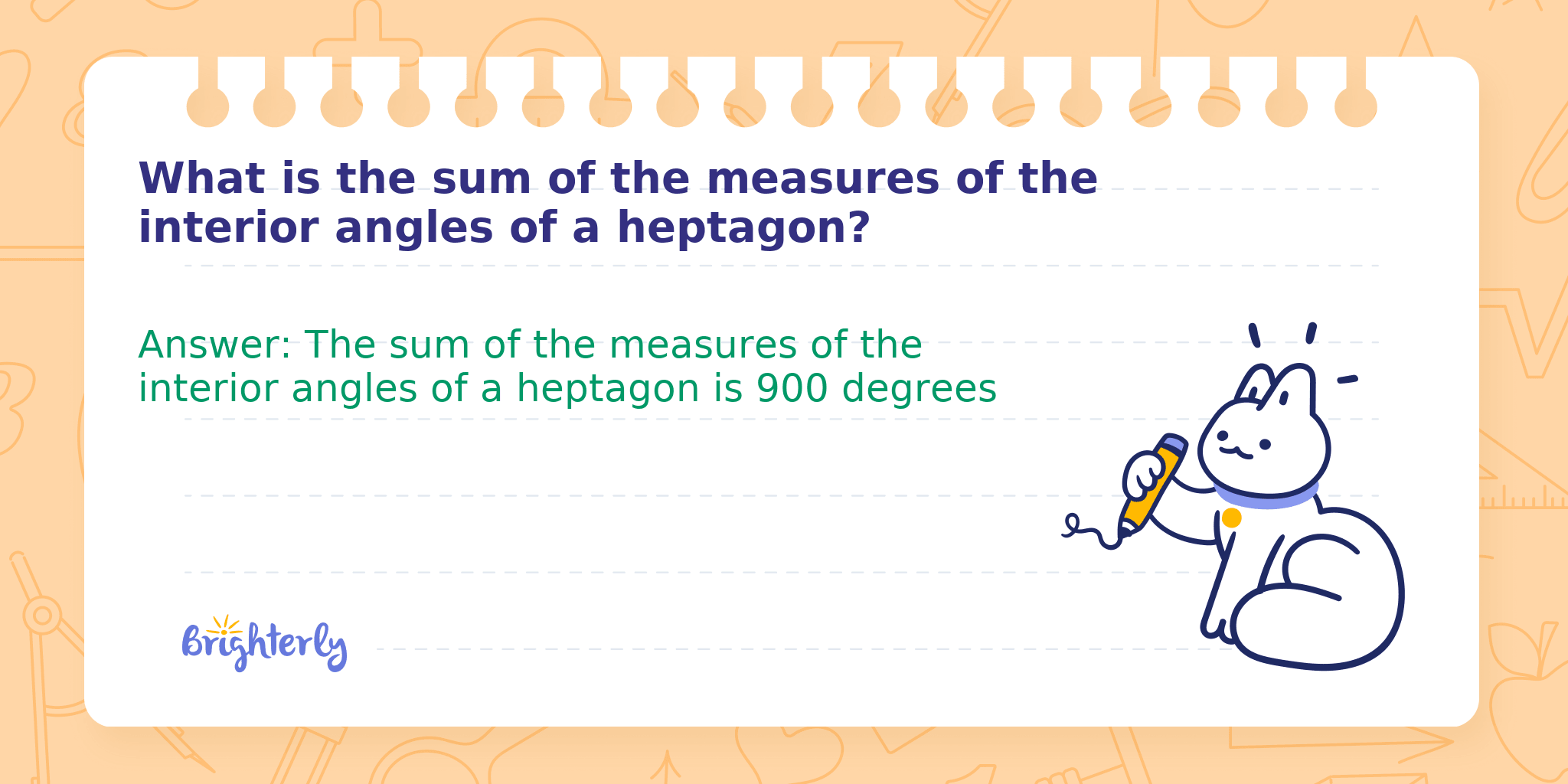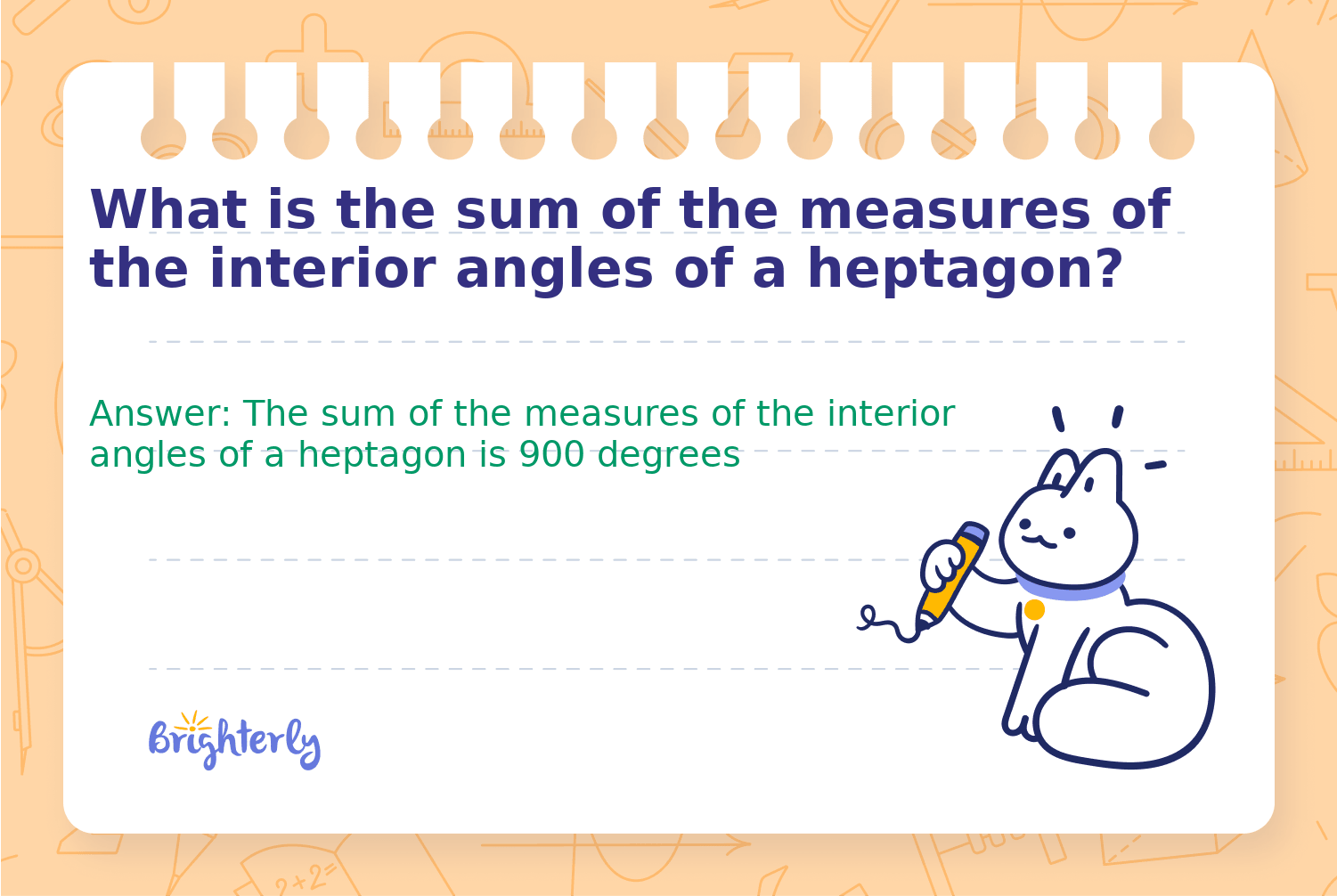
Reviewed by Jo-ann Caballes
What is the sum of the measures of the interior angles of a heptagon?
Answer: The sum of the measures of the interior angles of a heptagon is 900 degrees
A heptagon is a seven-sided polygon. Understanding the sum of its interior angles helps in geometry for calculating individual angles when the polygon is regular or solving problems involving polygons in general. The sum of the interior angles of any polygon can be determined using a simple formula based on the number of sides.
Methods
Math Tutor Explanation Using the Polygon Angle Sum Formula
To find the sum of the interior angles, we use the formula (n - 2) × 180°, where n is the number of sides.
Step 1: Step 1: Identify that a heptagon has 7 sides
Step 2: Step 2: Substitute n = 7 into the formula (n - 2) × 180
Math Tutor Explanation Using Triangle Partitioning
A polygon can be divided into triangles to calculate the total sum of interior angles since the sum of the angles in a triangle is 180°.
Step 1: Step 1: Recognize that a heptagon can be divided into (n - 2) triangles
Step 2: Step 2: For a heptagon, that's (7 - 2) = 5 triangles
Step 1:
Step 2:
Math Tutor suggests: Dive Deeper into Angle Sums and Polygons
Explore more about the sums of interior angles for different polygons and learn additional geometric concepts with these related exercises.
FAQ on Polygon Interior Angles
How do you calculate the sum of interior angles of a polygon?
Use the formula (n - 2) × 180°, where n is the number of sides.
What is the value of each interior angle in a regular heptagon?
Each angle is 900° divided by 7, which is approximately 128.57°.
Does the sum of the measures of the interior angles change for irregular heptagons?
No, the sum remains 900°, regardless of whether the heptagon is regular or irregular.
What is a heptagon?
A heptagon is a polygon with seven sides and seven angles.
How does this formula apply to a triangle and a quadrilateral?
For a triangle (3 sides): (3-2)×180 = 180°. For a quadrilateral (4 sides): (4-2)×180 = 360°.


